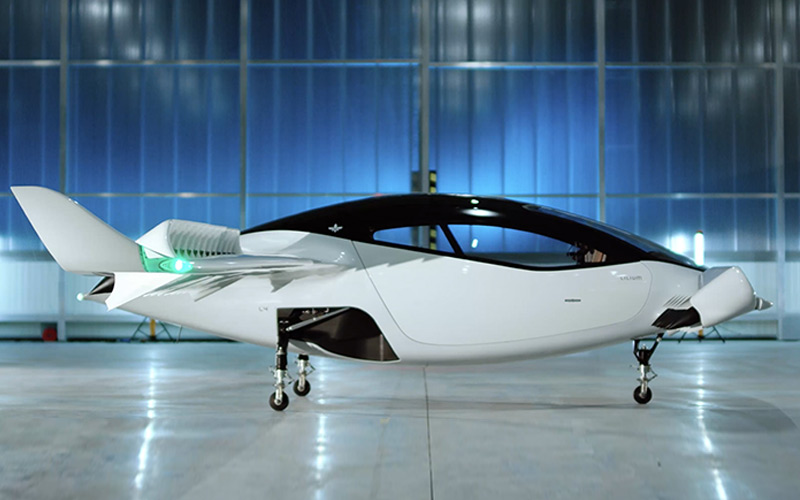Innovation is never far away in the automobile industry. Electric transportation for the masses, first responders, and more are coming to life and roads (and skies?!) near you.
Lilium Electric Air Taxi

Flying cars are no longer a thing of the future, well kinda. Lilium is a company attempting to make all your air travel dreams come true. Their electric air taxi, the Lilium Jet concept, is something out of a Jetson’s episode. It seats 4 passengers and a pilot, has a 300 km range, and encompasses 36 all-electric engines. Just like Uber or Lyft, Lilium’s app will allow you to punch a few app buttons to find the nearest landing pads and pilot in your city. Passengers can travel 300 km in as little as 60 minutes making the world around you more explorable than ever. Talk about jetting away for the weekend, eh?
Rosenbauer Electric Fire Truck

Rosenbauer’s 6-million-dollar fire truck is coming to the U.S. Currently, the electric fire truck is only tested in Europe, but with the electric market surging the company is looking towards the U.S. to create demand for electric first response vehicles.
A prototype was seen in California as Rosenbauer is in talks with the Menlo Fire Department, but the cost of this fire truck may be a little off-putting. Your average fire truck costs 1 million dollars and taking a 5-million-dollar leap into an electric version may be difficult for some fire departments across the country. Menlo’s Fire Department expects that, after a mechanic’s inspection, that the Rosenbauer electrified truck will require less maintenance, making the price tag a little less daunting. Not much has been said about the specs of this truck, but Rosenbauer says that it can be operated for at least 30 minutes.
Electric Semi Trucks

Electric semis have been on the agenda of several large automakers over the last few years, but we’ve yet to see them take to the road. Companies like Tesla, Daimler, and a handful of others have taken to engineering a design of their own. Tesla’s semi-trucks are probably the most infamous of the lineup of electric trucks as the truck specs wow the world. With a 0-60 time of 20 seconds, four independent all-electric motors, a range of 300-500 miles, and an expected $200,000 in fuel savings, the Tesla semi is one truck that its competitors can’t seem to compete with currently.
Canoo: Electric Subscription Car

Have you been dying to own an electric vehicle but don’t have the cash? Well, a Canadian company, Canoo, is making it easy to drive an electric car. Just subscribe to one. Canoo will own the car and riders will share the vehicle based on their subscription fee. The Canoo concept car is shaped somewhat like a rounder Prius and offers a ton of space for “living” which electric and autonomous vehicles are trending towards these days.
Gnewt Cargo: All Electric Delivery Fleet

The U.K.’s first-ever all-electric delivery van fleet is Gnewt Cargo. As seen on one of our favorite shows, Fully Charged, Gnewt Cargo offers electric delivery from their very own fleet of Nissan cargo vans. Gnewt Cargo has over 100 electric vans and has delivered over 1 million packages across the United Kingdom. The company claims that they reduce 67% of carbon emissions on every parcel, making the world a better place.
Electric Ferry

Want to pop over from Denmark to Sweden? Hop on the electric ferry. With almost 3 years invested into its design, the ferry shuttles passengers across the gap 46 times a day while spending minimal time charging on either side of the crossing. According to Fully Charged, the ferry shuttles 7 million passengers and nearly 2 million vehicles each year. Though the crossing is a short trip, this electric ferry is paving the way for other mass transit water systems all around the world.
Electric Bikes

Last, but not least, the most accessible form of electric transportation falls on electric bikes. Electric bikes aren’t new to the world really, but they’ve become quite the trend. We somehow fell in love with the idea of riding electric scooters around busy cities, but there’s not an app for electric bike rental yet.
Probably because electric bikes are a little more expensive than a $150 electric scooter. Electric bikes are usually upwards of $1,000 or more but they usually multifunction as city riders and off-the-beaten-path transportation. Not only do they require less work to maneuver, but they also get you to point B from point A faster. Just hop on your bike, make your way to the coffee shop, pedal into work, and do it all again. Electric bikes make it that easy.
What’s Next?
Well, that’s just the shortlist of all things electric transportation. What would you like to see engineers electrify next? Tell us in the comments below!









